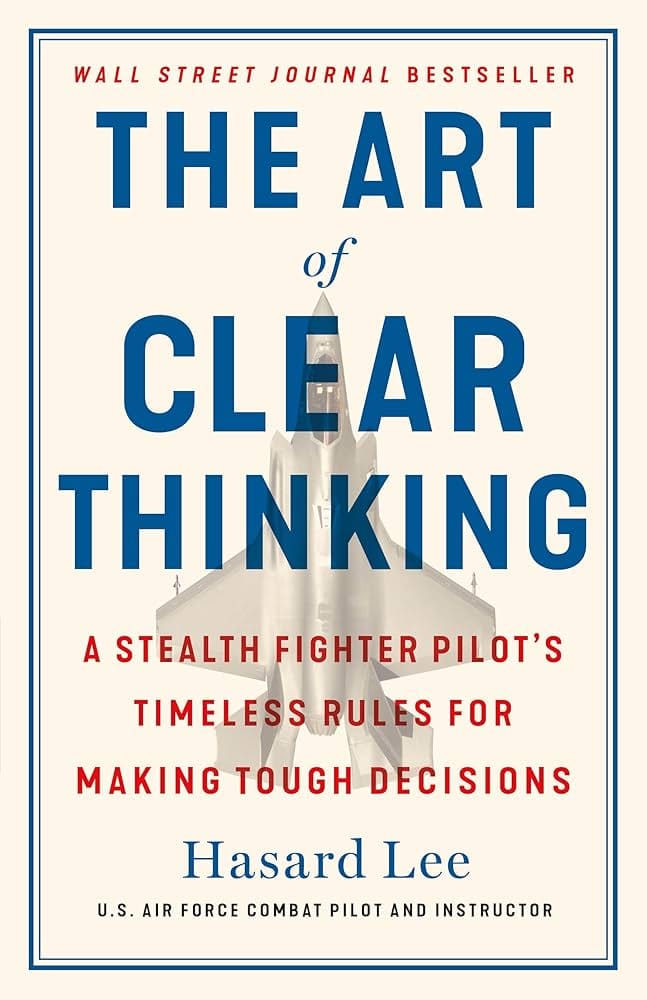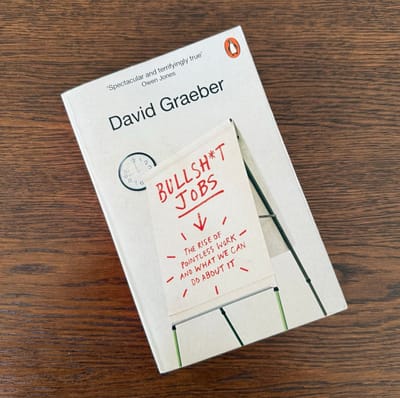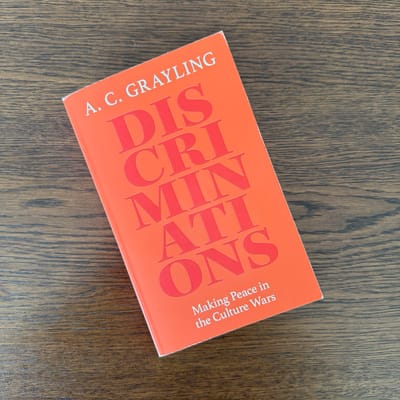The Art of Clear Thinking by Hasard Lee

Hasard Lee flew F-16s and F-35s for the U.S. Air Force, leading combat missions and commanding elite teams.
However this book isn’t so much about flying, it’s about thinking clearly when it counts.
Lee shares how fighter pilots are trained to make life-or-death decisions under pressure, and how those lessons can help you think better at work, in life, and under stress.
Below are my notes and takeaways.
Key Themes
Lee breaks the book into three parts:
- The Fundamentals of Clear Thinking
- Decision-Making Under Pressure
- Leadership and Mental Performance
Each chapter offers stories from the cockpit, practical tools and decision-making rules that apply well beyond the military.
Timeless Rules for Clear Thinking
Decision-Making is a Learnable Skill
Clear thinking isn’t talent - it’s training.
- Pilots aren’t all born decisive. They develop processes, habits, and feedback loops.
- Good outcomes don’t always mean good decisions.
- Focus on the quality of the decision process—not the result.
Takeaway: Debrief every decision. Ask: What worked? What didn’t? What did I assume?
Task Saturation Kills Thinking
Your brain can only handle so much. When you’re overloaded, it starts dropping tasks.
- Task saturation is when cognitive load exceeds capacity.
- Fighter pilots are trained to shed low-priority tasks quickly.
Use the Three Priorities Rule: At any moment, know your top three priorities. Ignore the rest until bandwidth returns.
Use the OODA Loop
Observe → Orient → Decide → Act. Then repeat.
- Created by Colonel John Boyd to train fighter pilots.
- It’s a loop, not a line, you should cycle through it constantly.
- Orientation (how you frame the problem) is often the weak link.
Tip: Get faster by shortening your OODA loop, but don’t skip the orientation step.
Apply the 80% Rule
You rarely get full information. Waiting for it slows you down.
- Make decisions once you have 80% of the info.
- In dynamic environments, speed > precision.
Ask: Is this enough to move forward? If so, act. Adjust course later.
Embrace Uncertainty
You’ll never feel 100% ready, and that’s okay.
- Ambiguity is the default setting in fast-paced work.
- Action creates clarity. Indecision creates drag.
Mental shift: Move from “I need all the facts” to “What’s the next best move?"
Rehearse situations (“Chair Flying”)
Pilots rehearse in their heads before every mission, to build readiness.
- They don’t just visualise success, they also visualise what can go wrong.
- It’s a kind of mental simulation with serious payoff.
Try this: Rehearse your next pitch, meeting, or difficult conversation in detail. See it failing and succeeding. Prepare for both.
Always Debrief
Every mission ends with a no-blame debrief.
- Focus on what happened, not who’s to blame.
- You learn faster when the ego is removed.
Debrief Template (Use this after presentations, projects, even personal decisions):
- What was the objective?
- What actually happened?
- Why did it happen?
- What will I/we do differently next time?
Regulate Your Emotions Under Stress
Fear, adrenalin, and panic hijack clear thinking. You need tools to stay composed.
- Pilots train to notice their body’s signals and regulate their breathing.
- Staying calm keeps your brain online when others freeze.
Box Breathing:
- Inhale for 4 seconds
- Hold for 4
- Exhale for 4
- Hold for 4Repeat for 3–4 cycles to reset your system.
Clarity Beats Complexity
Complicated plans break down in motion. Simple always wins.
- Clear communication (extreme clarity), shared checklists, and plain language create alignment.
- Complexity introduces confusion, especially under time pressure.
Do this: When in doubt, simplify. Strip away jargon, focus on intent, and repeat your objective.
Lead From Wherever You Are
Leadership isn’t about title, it’s about mindset.
- Junior pilots lead by showing up prepared, focused, and calm.
- Great leaders reduce chaos and raise the standard.
Lead by example:
- Be direct without being blunt.
- Stay mission-first, not ego-first.
- Be the fastest learner in the room.
Decision Making Tools Recap
|
Tool |
What it Helps With |
How to Use |
|---|---|---|
|
Three Priorities Rule |
Focus |
Limit yourself to three active priorities at any time |
|
OODA Loop |
Fast, accurate decision-making |
Cycle: Observe → Orient → Decide → Act |
|
Chair Flying |
Preparation |
Mentally rehearse success and failure |
|
Debrief Checklist |
Learning from action |
Review goals, outcomes, causes, improvements |
|
Box Breathing |
Regulating stress |
Inhale-Hold-Exhale-Hold (4 seconds each) |
|
80% Rule |
Overcoming indecision |
Act when 80% ready, refine later |
Final Thoughts
This book is a sharp, practical approach to decision-making. It’s ideal for people in fast-paced roles, operational managers, founders etc, but also offers tools anyone can use.
Lee writes with clarity and purpose. No fluff. Just the lessons that matter.
Key ideas worth remembering:
- Decision-making is a trainable skill.
- Mental rehearsal improves performance.
- Debriefs accelerate learning.
- Simplicity wins under pressure.
- Clarity isn’t optional, it’s survival.
I enjoyed this, it's a super simple book with some examples that were both interesting and relevant. I'm not sure how often I'll be box breathing in my office environment, but many of the rules and tools are relevant and useful in the workplace.
I'm in complete agreement with the idea that clarity makes decisions easier, the payoff and impact is absolutely clear.







Member discussion